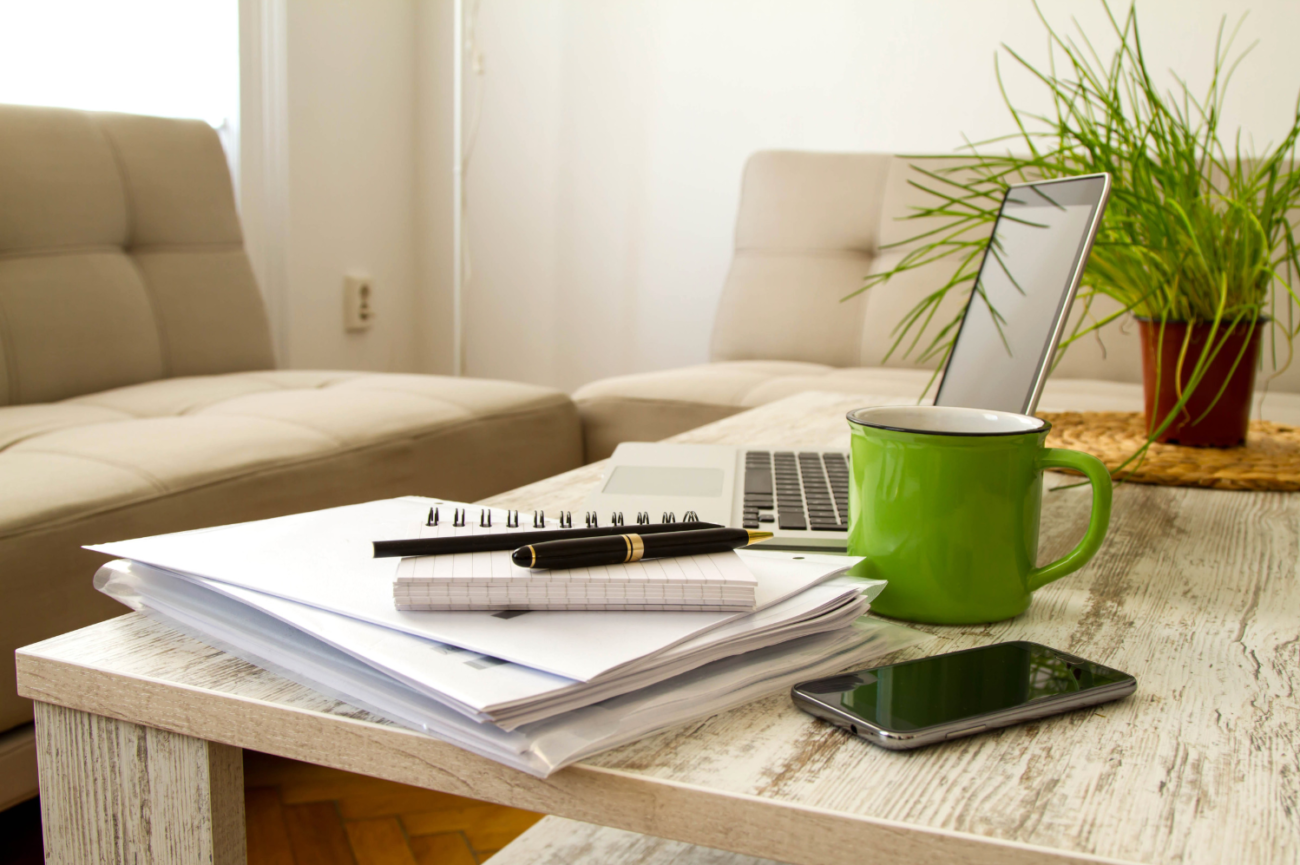
POSTED:
While some people thrive on the flexibility of working from home, others may miss the structure of working from a centralised location. Regardless, it’s important for all remote-workers to develop a healthy routine that helps maintain work-life balance, supports productivity and keeps them feeling engaged in their work.
Below we’ve pulled together some of the top evidence-backed tips to help you create a healthy work-from-home routine that will reduce mental fatigue and add structure to your day.
Get active before you start
Working from home can mean hours spent at your laptop without moving much, but it’s critical for mental and physical health to build healthy exercise habits into your daily routine, especially when you’re spending so much time at home. There are many ways to get moving without a gym membership; getting out for a walk or run is a great start (as long as you’re practicing social distancing). There’s also an abundance of at-home workouts for all fitness levels that can be found on Google and YouTube. It’s a great idea to get moving before you get stuck into your work (or breakfast). Not only will this stimulate your brain and set you up for a successful day, but you’re also more likely to put exercise off if you leave it until later in the day.
Prepare meals in advance (even better if they’re healthy)
Preparing meals in advance is a great way to make sure you get adequate nutrition and maintain a healthy routine while working from home. Relying on making every meal from scratch eats up a lot of time throughout the day. There’s also the risk of losing track of time and then running to the fridge to grab unhealthy snacks when you get hungry. By bulk cooking or preparing meals in advance, you can choose nutritious ingredients that will sustain your energy throughout the day, resulting in better moods and increased productivity.
Set a dedicated ‘work station’
When working remotely, it helps to dedicate a specific area of the house as your ‘work station’. This should be a clean, quiet space that you enjoy being in. While you’re at your work station, you should focus only on work (don’t read books or scroll through Facebook at your work station). This sends a message to your brain to focus only on work when you enter your work environment, which will help you stay focussed throughout the day. It also helps to plan your work the night before. That way, when you arrive at your work station, you can get straight into your most important tasks.
Set clear ‘work’ and ‘home’ hours for yourself
Remote work gives you the flexibility to build a schedule that suits you best because you can work at times of the day when you feel most productive. On the flipside, you never physically switch off and leave your work environment the way you would at the office. That creates a tendency to let work hours slide into what would usually be rest hours. This can impact negatively on your mental health and your relationships with family members. There’s also evidence to suggest you’ll be more productive and feel happier if you focus 100 percent while you’re working, and have adequate rest in between where you switch off from work completely. We suggest setting and sticking to scheduled work hours, for example, if you’re used to working between 8:30am – 5pm you may want to stick to that. Or you may want to adjust your hours to start earlier and finish earlier if you’re a morning person. It’s a good idea to talk to your family and your employer and find a schedule that suits you but still allows you to collaborate with your team, and also manage any family commitments you might have. It’s also important to take short, scheduled breaks throughout the day to make sure you’re giving yourself time to re-energise and refocus.
Be clear with other household members that you’re not to be disturbed during dedicated ‘work hours’
Once you’ve set your work hours, it’s a good idea to inform your household members of these hours and ask them kindly not to disturb you unless there is an emergency or you’re on a scheduled break. A good rule could be that once you enter your dedicated work station, you aren’t to be disturbed. Or you may want to create a ‘do not disturb’ sign to put on your door while you’re having conference calls. Whatever methods you choose, it’s good to be clear with household members about your work hours so you can stay focussed, which also means you’ll be able to fully engage with them during your rest hours.
Set clear daily goals for yourself and review them at the end of each day
Working remotely often means you’re responsible for minding your own schedule, which adds a lot of flexibility to your day. But it can also make it difficult to keep track of your progress. There is truth to the saying “what gets measured gets done” and it’s important for the success of your role and your company that you keep a finger on the pulse of your daily progress toward your goals. It’s a good idea at the end of each day to review your goals and take stock of the progress you’ve made. Did you achieve everything you needed to today? If not, why? If yes, what needs to be done next to keep the momentum going? Once you’ve taken stock, it’s a good idea to plan the most important tasks for the next day to make sure you’re staying on track. It also helps to set a progress check in with your team towards the end of each day to hold you accountable to your tasks or goals.

